The opportunities and challenges for programmatic in 2015
 The last five years has seen a steady rise and development of programmatic advertising in Australia. Here Shane Cummings looks at where programmatic stands in 2015, and asks a panel of industry leaders about the opportunities and challenges facing the industry in the year ahead.
The last five years has seen a steady rise and development of programmatic advertising in Australia. Here Shane Cummings looks at where programmatic stands in 2015, and asks a panel of industry leaders about the opportunities and challenges facing the industry in the year ahead.
Programmatic advertising has been growing exponentially since Google introduced its Doubleclick AdExchange – the first major programmatic display platform – in 2010. According to the Standard Media Index data media agency spend through exchanges has gone from $10m in 2011 to just under $200m in 2014. And that’s not including clients who spend their cash directly. With outdoor, radio and TV set to enter the fray 2015 promises to be another landmark year.
- For an overview of how programmatic advertising works see Nic Hodges’ Mumbo Jumbo feature here
Aussies doing things differently
Jason Tonelli is the executive director – technology, digital and content at Starcom MediaVest, which has has been active in programmatic since 2010.
“Australia has done a great job in opening the conversation of programmatic, and we lead from an allocation of spend perspective without doubt,” Tonelli says.
“What I am seeing in other markets such as Europe and the US is that they are connecting technology well. Where we have grown significantly in marketing spend, these other markets have built data markets in a more reliable way – so that ad decisions and creative decisions are made with more precision. This is a big opportunity in this market.”
“Aussies are culturally loud and push the boundaries by nature,” says Kerry McCabe, managing director for Asia Pacific at RadiumOne, which runs programmatic media across all digital channels and devices.
“Every brand and agency is constantly demanding more and better − this forces constant investment and innovation across both supply and demand sides. The speed and lack of constrained business thinking suits this market,” says McCabe.
Australia is also perfect for testing innovation at an acceptable scale. This is being done quickly and cost effectively by fairly smart operators on the tech side.”
Marc Lomas, managing director at IPG Mediabrands’ Cadreon unit has been exploring an out of home (OOH) programmatic option he calls the “fifth screen”. The goal is to plan and transact OOH, like any other digital screen, programmatically. The first phase of this project, according to Lomas, was about automating the trading of inventory. The next phase will be about overlaying unified audience data over inventory.
When it comes to Australia, Lomas sees the small size of the market as a blessing.
“A smaller market with fewer participants facilitates collaboration between buyers and sellers. Australia is less of a middleman-dominated market and there is strong desire to connect buyers with sellers in the purest fashion, which programmatic facilitates,” Lomas says.
Looking ahead: the trends
McCabe predicts three trends this year:
- Private programmatic marketplaces will become the norm. Programmatic will become less of a standalone ‘thing’ and more the foundation that supports all trading − both data enabled and not. This will lead to publishers (and offline media owners) further automating the sales process to both protect and grow their revenue and yield through private agreements with brands and agencies. The prevalence of open exchange-based activity will decrease.
- Real-time insights will ‘electrify’ planning. Most brands by their own admission are still not effectively converting customer and prospect data into new customers and improved LTV. In 2015, previous years’ trial and error, along with sheer necessity, will see more brands utilise technology to better understand, harness, and activate these signals to improve business outcomes.
- Creative and programmatic will co-exist. The insights and creative piece is still often disconnected from activation. Greater collaboration between the creative and programmatic activation processes will become business critical for brands.
SMG’s Jason Tonelli also saw three emerging trends:
- We are in a man and machine world, not man or machine. Programmatic is a machine delivery workflow – not intelligence automation – and that’s where we pride ourselves on the people using the technologies to find clients incremental efficiencies.
- Marketing will continue to become more scientific. At SMG, we are focussed on delivering more precise, personalised messages – and to do this, we have invested heavily in the past six months in owning technology so that we can accelerate our precision marketing practice. Our most recent acquisition, RUN, is a DMP and DSP, and we are excited about how this technology solution will further our clients effective marketing strategies in the programmatic space.
- Data organised around people, not device. This is key as we start to look at how precision communications starts to work between media and creative. As we organise data better, we will be able to story-tell better, leading to better and more vivid brand connections with consumers.
Not surprisingly, given Cadreon’s “fifth screen” OOH programmatic solution, Marc Lomas saw the expansion of programmatic into the traditional broadcast channels like radio, and OOH as well as TV, with MCN leading the way in Australia with the Landmark system for pay-TV provider Foxtel.
He says: “Cadreon has launched programmatic digital out of home, which will continue to expand; The Netherlands launched their first campaign recently, and we expect the UK to follow. Radio is next. Cadreon is currently involved with Australia’s leading radio networks in order to leverage the benefits of programmatic across online streams, DAB, and eventually, broadcast.”
Lomas says as the market begins to realise the true power of programmatic, automation and efficiency will become early benefits. However, the real benefit of programmatic is “the ability to apply custom decisioning to each and every ad impression pre-purchase.”
“This custom decisioning will continue to build in sophistication by feeding more custom variables into algorithms. We will start to see the emergence of the BYO-Algo; advertisers will be able to add customer data, attribution data, and other bespoke data sets to be considered by the algorithm when making bid decisions. Instead of the market running on a few standard algorithms, we will start to see investment to customise these to specific advertiser/industry requirements. These will become huge assets for advertisers who invest early,” Lomas says.
He adds we will continue to see expansion of programmatic “across more of the digital pie”. Brand dollars will start to flow into programmatic channels as better creative opportunities and standardisation occurs.
Lomas adds:
Measurement of digital media will increase in sophistication with proper attribution, audience verification, and viewability becoming standard. This will further benefit programmatic as it provides the solution to impact new measurement metrics by reacting and optimising in real-time.”
Looking ahead: the challenges
Tonelli also saw three challenges that may trouble the programmatic landscape this year.
- Reliable data at cost efficient pricing. Being more effective will come at a price, but the net effect needs to be in favour of the advertiser, and in the programmatic space, this is not yet happening.
- Being nimble to change to advertiser needs. As advertisers start to shift more of their budgets into the programmatic they rightly want further openness, better access to technology and tools and a transparent business model. The industry has to be open to new models that work with clients’ needs to deliver them the best outcome.
- Standardisation of technology gaps such as click fraud, viewability, and in target delivery. We need to have standards set so that clients are comfortable in what is being delivered is driving their business in a brand safe way, but also in line with their business objectives.
McCabe agrees that ad fraud looms as a big issue, which is further exacerbated by the sophistication of the perpetrators and the immaturity of the industry trying to solve the fraud issue.
“The intent is there, it just now needs strong collective leadership and action rather than waiting for a perfect solution,” McCabe says.
More unique to Australia is the stranglehold agency trading desks have on agencies, clients, and vendors. The resulting trust and transparency issues are holding many brands back from fully investing in programmatic.”
McCabe also saw attribution as a challenge across the board. “But I sense diminishing returns on last click will see marketers adopt more sensible and sophisticated multi-view models that appropriately value the entire consumer journey and purchasing funnel.”
Lomas says Australia’s challenges are not unique, but the major ones are “education and understanding what drives some of the lesser challenges and misconceptions such as mistrust, programmatic as a yield killer, and ‘programmatic can’t be premium'”.
“Brand safety and ad fraud are a constant thorn in the side of exchange buying, yet we foresee this decreasing in prevalence as technology and processes are now better able to respond to this threat. In addition, as the market matures, we see more premium inventory coming into the fold, reducing the need to buy the bottom of the barrel,” says Lomas.
“Bigger than programmatic but related is the increasing complexity of the channel. The muddy water needs to be cleared allowing marketers to easily judge and measure return on investment. This has become increasingly difficult due to the fragmentation and failure of many established measurement methodologies. If we can’t prove our worth as a channel, growth will suffer.”
A race to the bottom for media owners?
A challenge for some media owners is their reluctance to embrace the push to put more premium inventory into programmatic exchanges. Their reluctance stems from fear of a loss of revenues and control through the devaluing their best inventory.
McCabe says the perception that programmatic trading is a race to the bottom is fast changing, and it was only ever that: a perception.
“We’ve seen a rapid shift away from trading only remnant inventory at low CPMs in an auction environment to trading all inventory types and data on fixed price direct deals with improved efficiency,” McCabe says.
“The early fears around a loss of control for media owners have not been realised. In fact, supply-side platforms are giving publishers more control over price and inventory than they ever had before.
“It’s important that all media owners understand that programmatic technology is simply the enabler to help the industry progress and evolve; it’s essential for growth and survival.
“Machines won’t replace people − they just make us more effective. We’ll continue to get smarter just as the machines we build are. We’ll focus more on the things we are great at: creating, relating, understanding, and connecting on a human level, which is what our industry exists for.
Lomas’ colleague at Cadreon, general manager Jess White, inverts the question.
“Programmatic is devaluing inventory? Or is it re-valuing inventory? Programmatic is an opportunity for media owners to generate revenue from inventory that may otherwise have been de-valued in traditional pricing models (e.g. below the fold ad units that are in fact in-view). Most media owners we work with are already embracing emerging valuation tools being used by agencies and assessing how this impacts pricing and their sales proposition, whether it be for application across a direct sales channel or via automated pipes such as programmatic,” White says.
“Our experience with media owners has been positive, with many major pubs among others, demonstrating sophistication around their pricing and inventory strategies that they are applying in programmatic and seeing incremental revenue growth as a result.
“In these scenarios, the media owner has advised and consulted on best targeting, the pricing parameters as well as expected results, maximising the benefit of programmatic and embracing it as part of their media offering.”
The myth of programmatic is that it is about commoditisation of inventory and decreasing publisher yield, but according to Tonelli, there are two key things to remember.
“The first is that pricing is still set by the media owner, so every programmatic impression that is placed into the marketplace has been priced by the media owner before entering the market. The second is understanding who determines value (or premium) in this equation. This has always been the advertiser across all media, but the step change is that technology will start to decide what value is right based on what we know about the person who is seeing that ad impression.
“So nothing has really changed here apart from the fact that we are using technology to speed this process up and make pricing decisions at a single impression level, not in thousands or millions of impressions at a time.”
Shane Cummings



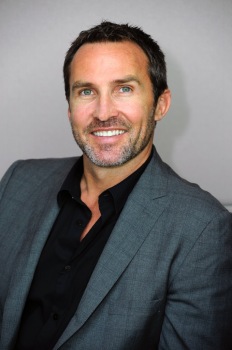
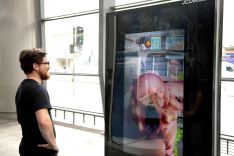
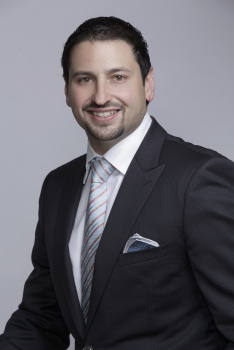
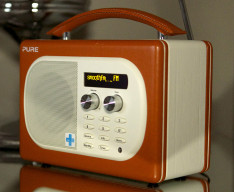
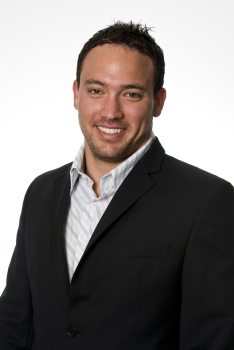


Hey Tonelli, what’s your view on the portion of allocated funds given to independent performance desks vs your agency mandated desks?
In terms of opportunity… is there any?
User ID not verified.